The past has returned, and now players are thrust into the thick of one of the defining moments of Magic history: The Brothers’ War.
A quick aside: the war involves two brothers; thus “brother” is plural. The war belongs to them; thus the apostrophe. The combination of both facts means that it is Brothers’, and not Brother’s or Brothers. Respect the English language!
Sorry about that brief aside. Anyway, BRO is a set built around a past conflict that is characterized by two things. The first is that the war was between two brothers: Urza and Mishra. The second is that the war involved the brothers creating a mass of gigantic mechs and mechanized creatures and throwing them at each other without end. How are these qualities distilled down into a Limited format? Let’s find out!
Mechanics and Themes
Let’s start with the mechanics and themes of BRO.
Artifacts
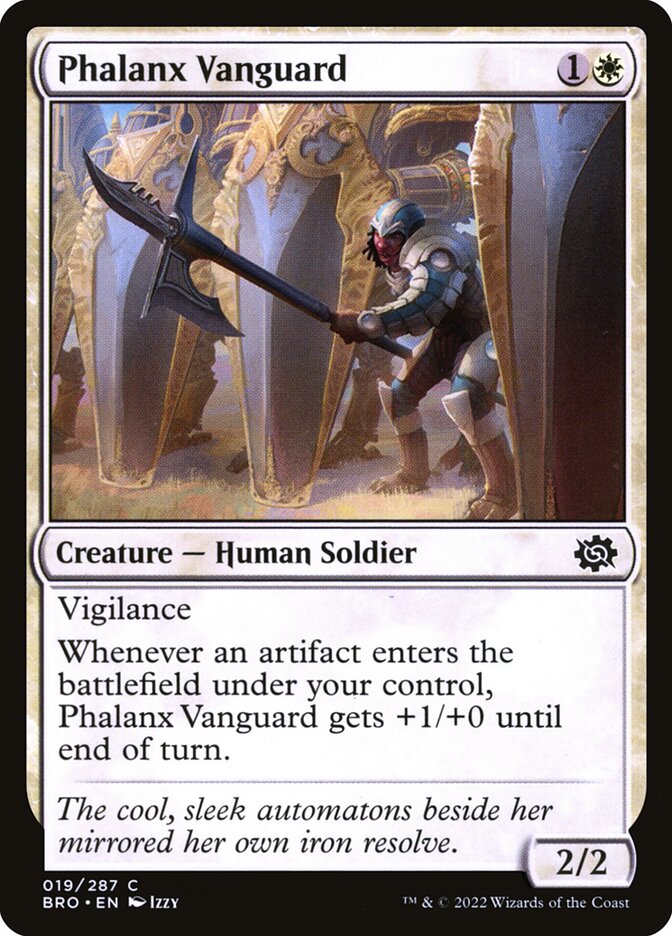
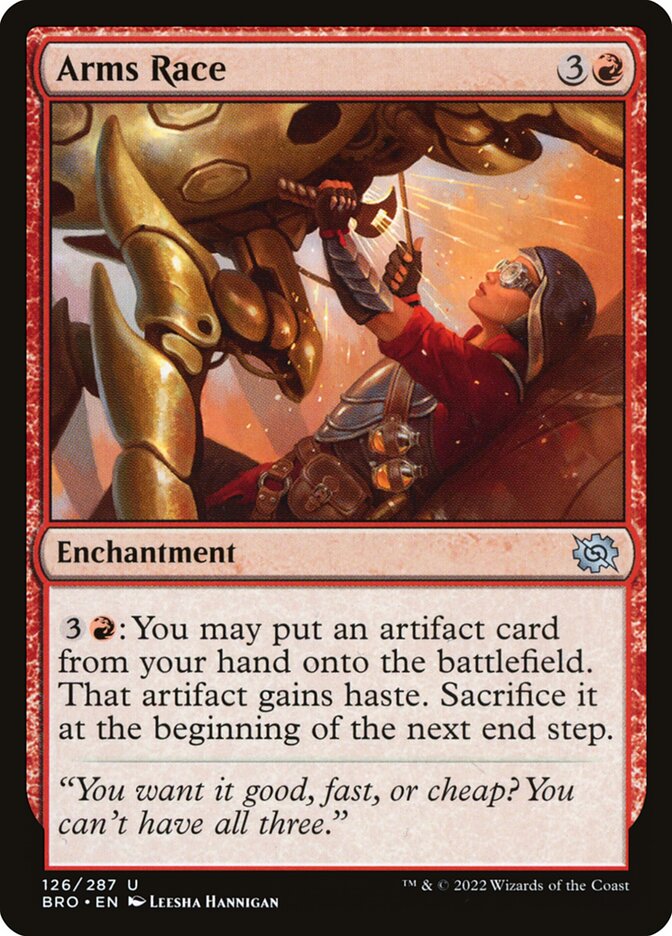
This is the big one: BRO is an artifact set through and through. There are tons of artifacts in the set, and only one of them has a color identity - although even the colorless artifacts have a color preference, as you’ll see when you read about the mechanics below.
Here’s the important thing though: although there are a whole heap of artifacts, the fact that they’re artifacts are nearly incidental to many of the Limited strategies in the set. What do I mean?
None of the major mechanics in the set have anything to do with artifacts. Some mechanics encourage ramp; others encourage sacrifice; others encourage graveyard shenanigans. But there’s nothing like Metalcraft, which was a mechanic that explicitly encouraged you to play as many artifacts as you could. Sure, there are individual cards in BRO that care specifically about artifacts: Phalanx Vanguard buffs itself through “an “artifactfall” effect that triggers when an artifact enters the battlefield under your control, while Arms Race allows you to (temporarily) cheat out artifact monstrosities. But there are fewer of these sorts of cards than you might expect.
So what’s the point of all the artifacts in the set? Well, some of them spit out tokens. Some are designed to work within a graveyard strategy. Some help you ramp. These specialities are what you’ll actually want to draft around. The fact that the cards with these specialties are artifacts is almost incidental.
All that being said, yeah, almost every Limited deck will end up with a ton of artifacts, and yeah, artifact hate is definitely something you can put into your main deck.
Prototype
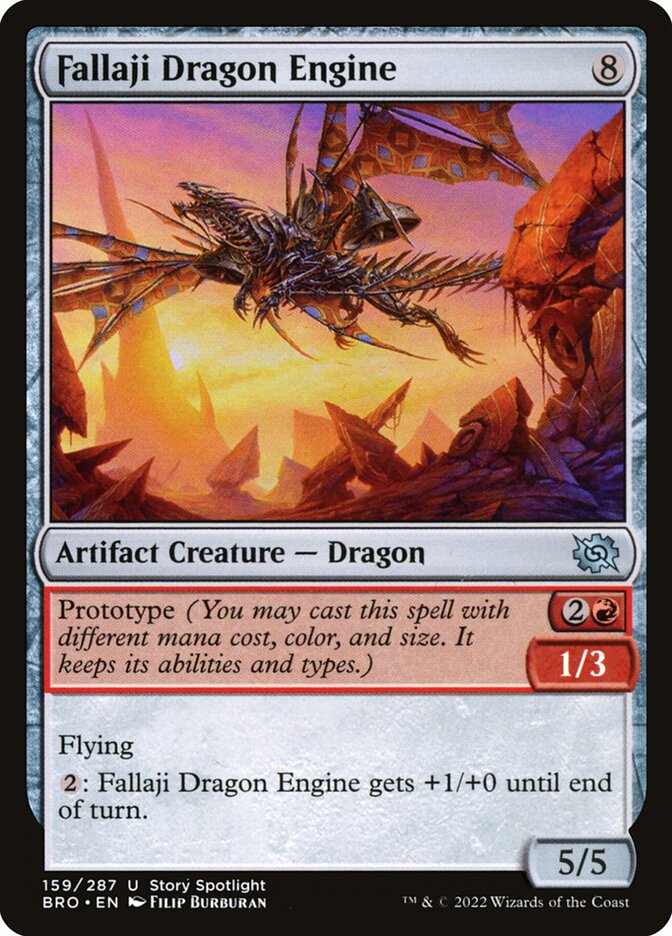
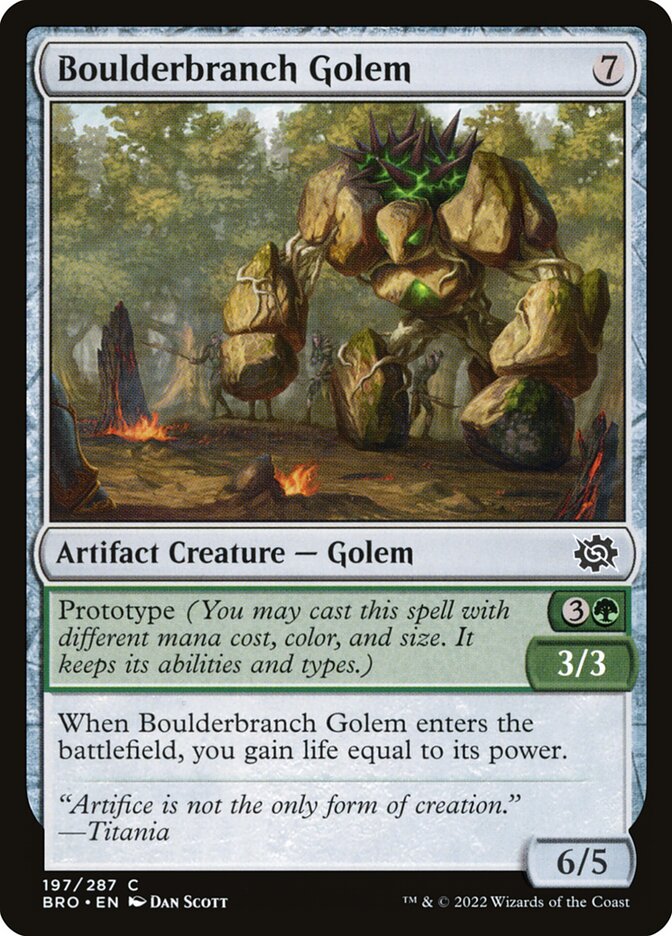
The monstrous mechanized threats of BRO are brought to life through enormous artifact creatures with colorless mana costs. That means they can go into any deck - and it also means that they’re balanced by being enormously expensive. Fortunately Prototype artifact creatures have an alternative casting cost that allows you to cast them at a far cheaper casting cost. The trade off? You can see it in Fallaji Dragon Engine: the artifact creature is smaller, and requires specific mana colors to play.
So will you play Prototype creatures for their cheaper Prototype cost the majority of the time? Perhaps - after all the fully-developed forms have ridiculously high mana costs that reach into the double-digits, and in most Limited formats it’s rare for either player to reach that stage of mana development. In addition, the greater casting costs for Prototype creatures actually seem like they’re overcosted given the stats and abilities. Why would you ever try to cast them as big inefficient beaters?
Two reasons. The first is that there are Prototype creatures like Boulderbranch Golem, with additional effects that scale with how they were cast. And the second? Well, speaking as someone that has gotten destroyed by nine mana 9/9 dinosaurs in Ixalan, inefficient beaters are often surprisingly efficient at winning a Limited game. And BRO has various mechanics that allow you to ramp them out faster than anyone might expect.
Powerstones
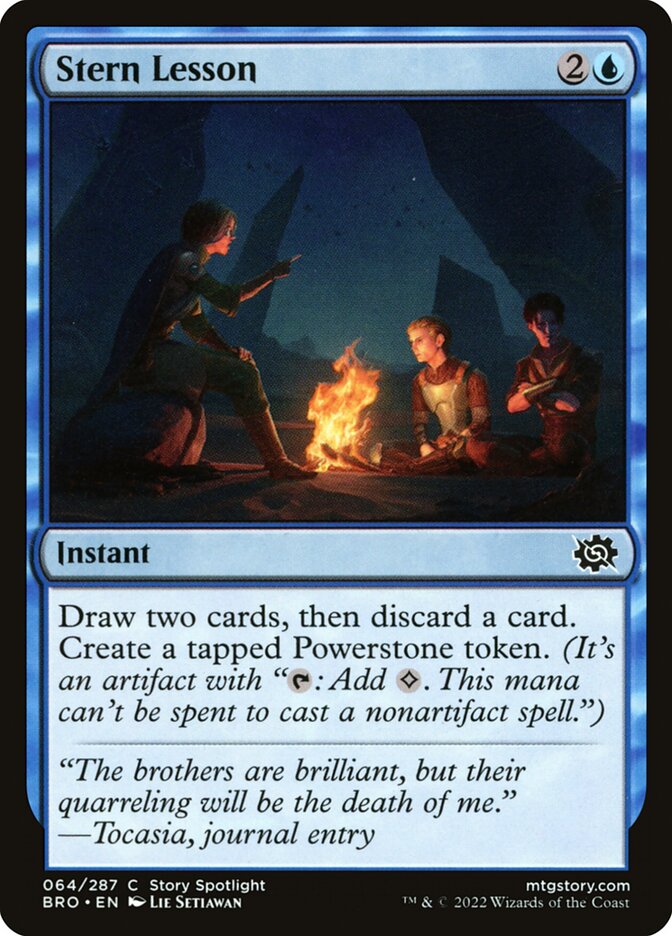
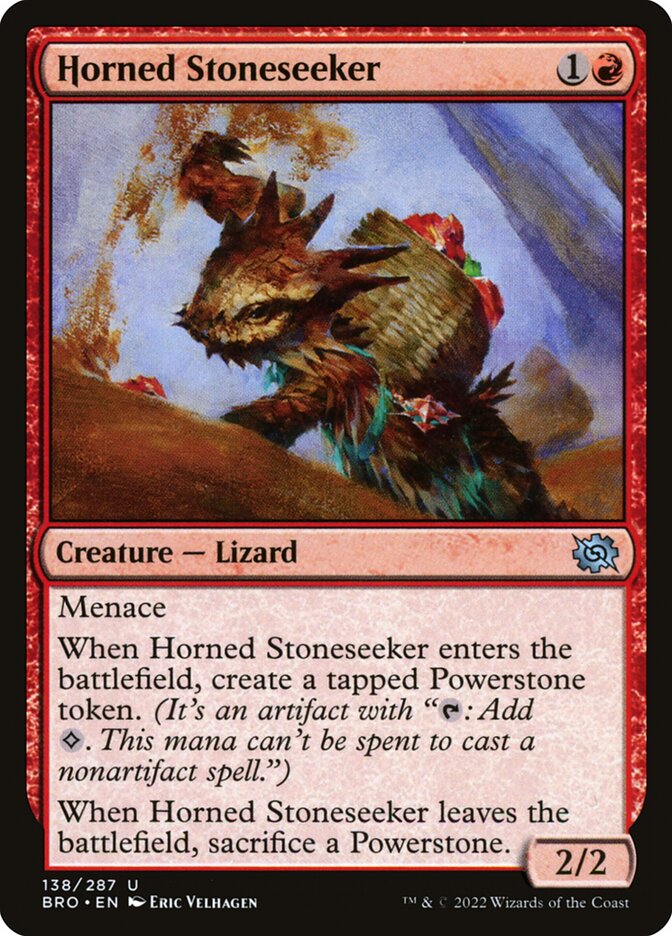
Powerstones are a (kinda) new artifact token that gives you additional mana - but only for artifacts and abilities. They’re often stapled onto modified versions of classic Limited cards; for example, Stern Lesson is basically a slanted version of Divination. What are Powerstones used for? Giant artifact creatures and powerful activated abilities that have a correspondingly high activation cost. Another hidden use of Powerstones is to act as artifact fodder, as there are many cards that ask you to sacrifice an artifact as part of their cost. Horned Stoneseeker is a perfect inclusion in such a sacrifice deck, as you’ll be able to sacrifice its Powerstone for value before its drawback comes into play.
Unearth


Unearth is a returning mechanic that allows you to briefly reanimate a permanent before it enters a rest eternal. It’s great for decks that just want to create a mass of attackers, heedlessly charging forward before reanimating the dead for a last gasp attack, and many Unearth creatures have an attack trigger such as Yotian Frontliner. The mechanic is also particularly good with permanents that have an “enters the battlefield” effect, as it allows that effect to trigger twice in a game. Note that non-creature artifacts like Mishra’s Research Desk can also have Unearth.
Meld

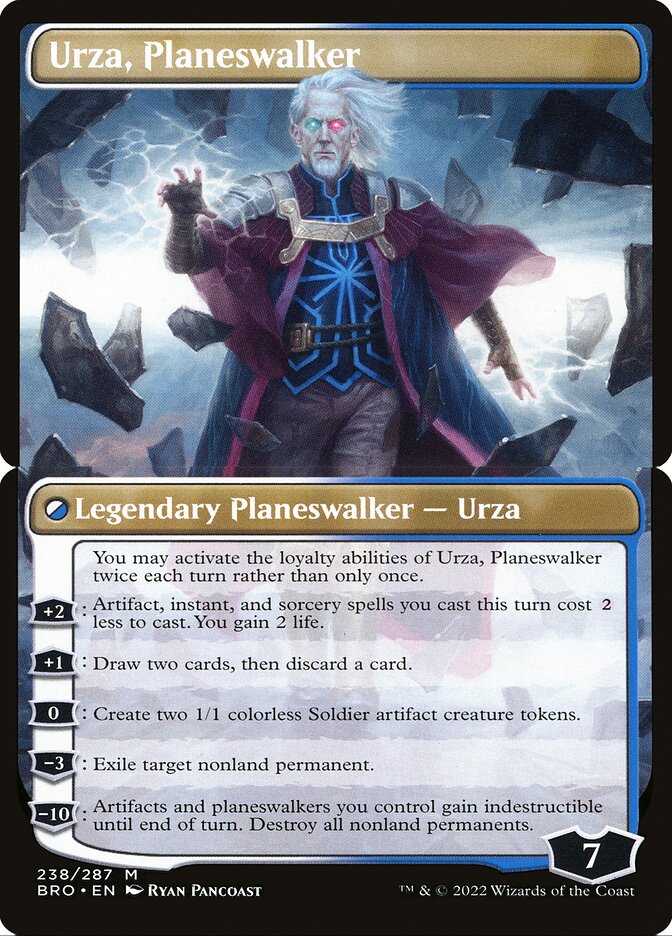
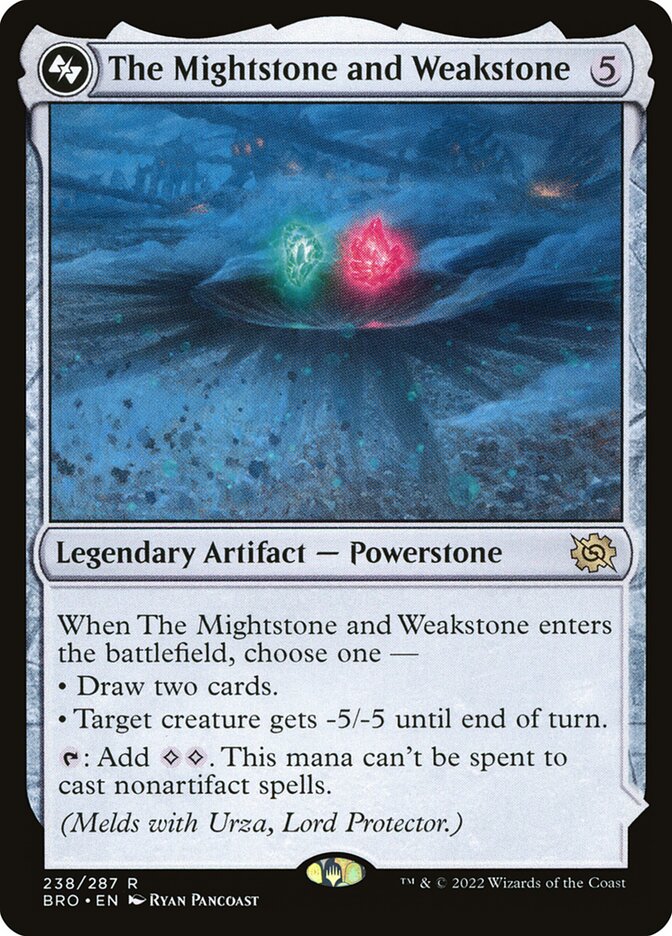
Meld is a very cool mechanic that you will almost never see in BRO Limited. It involves having two specific cards in play and meeting a very specific condition. The reward? You get to flip both of those cards over and combine them into a truly monstrous permanent. However the three Meld pairs in BRO all involve a mythic and a rare. Good luck finding them!
Note that the individual Meld cards are still very strong and easily playable by themselves, even without their partner.
Archetypes
Ten color pairs, ten archetypes, ten signpost uncommons, etc etc etc. What’s distinct about BRO is that these archetypes bleed heavily into each other: sacrifice and a graveyard theme, Powerstones and artifactfall, one kind of aggro and a slightly different flavor of aggro. Expect key cards to be good in multiple archetypes.
White/Blue: Soldiers
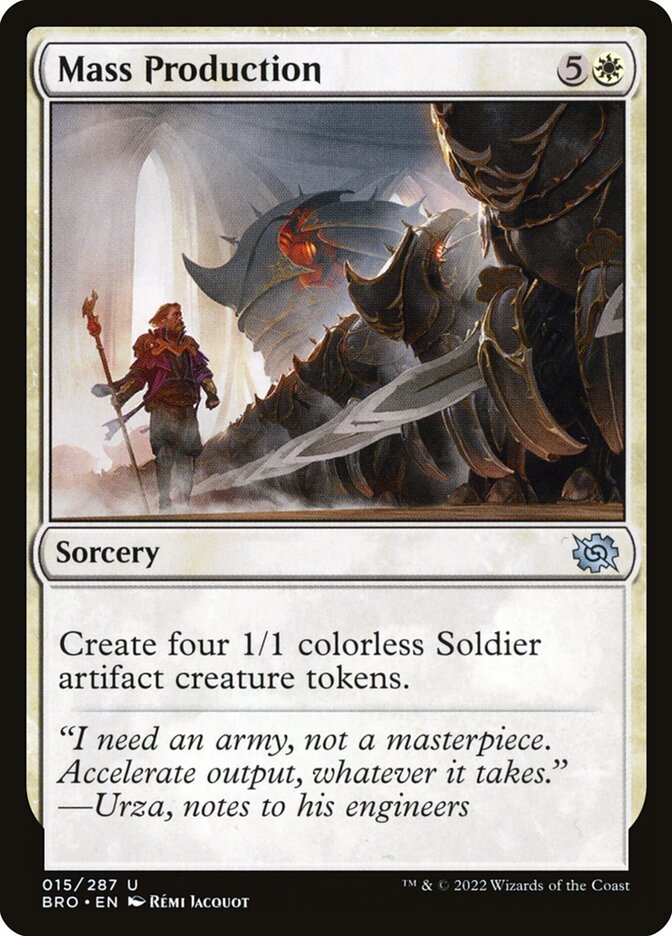
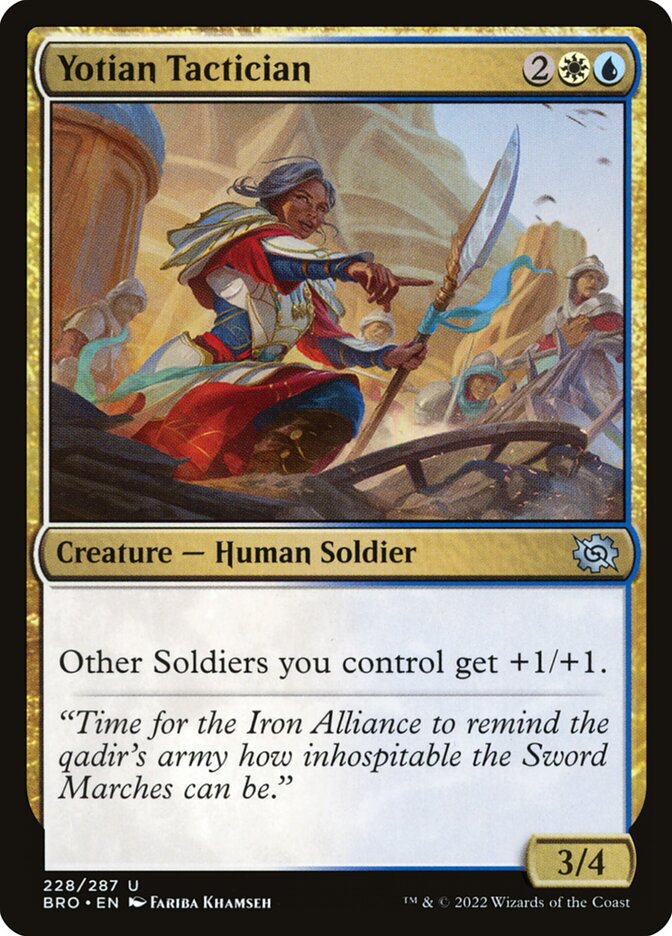
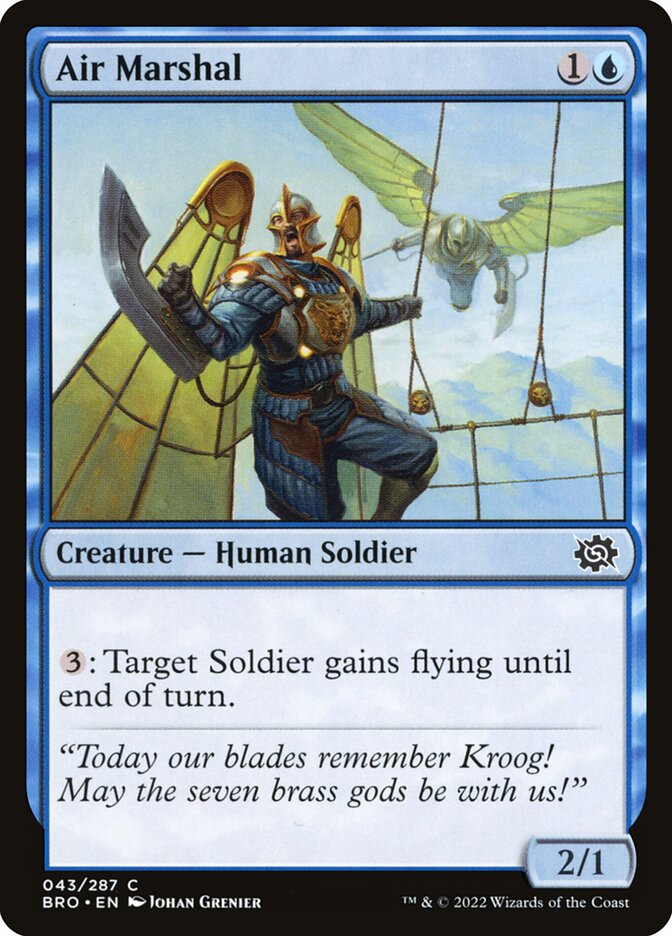
White/Blue is the color pair of control and evasion, so naturally it's archetype is tribal Soldiers: small and aggressive ground creatures that encourage you to take full advantage of the combat phase. Surprised sarcasm aside, one might ask what each of these colors contributes towards this strategy. White supplies ample Soldier tokens to flood the board with a spell like Mass Production, as well as the ability to reanimate small creatures that have fallen. Blue gives you tempo and creatures like Air Marshal that allow you to sneak in some evasion. Add in a Soldier lord in the form of Yotian Tactician, and you have a deck that can give a good and proper beatdown.
White/Black: Tiny Creature Beatdown
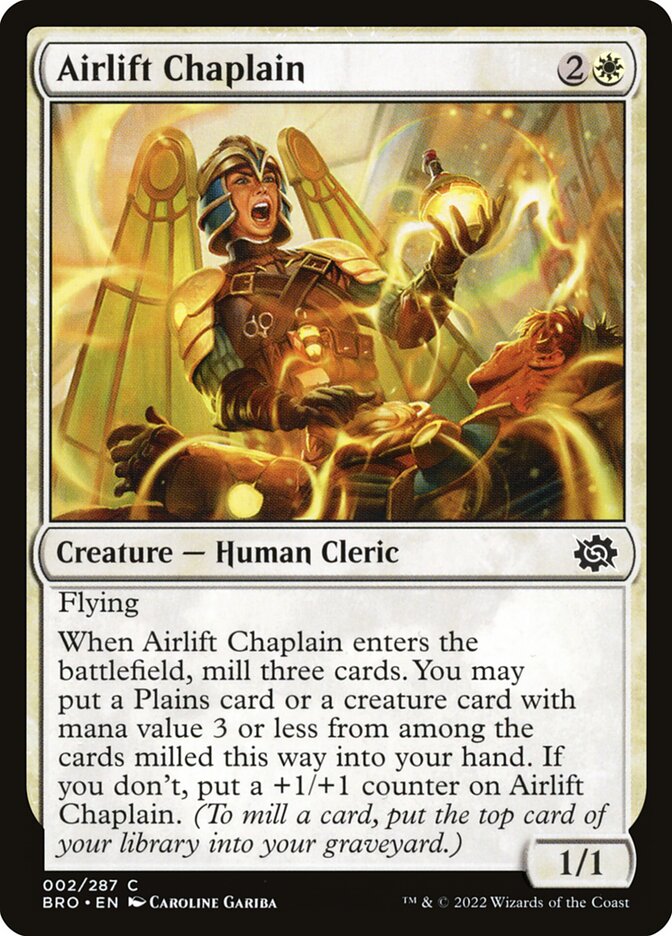
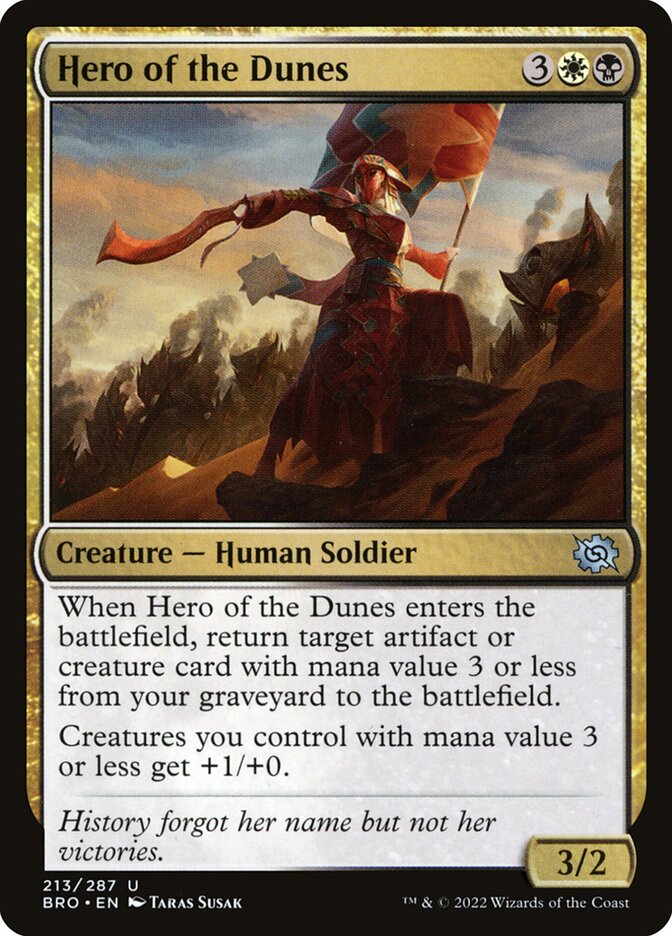

You wouldn’t think that White’s affection for small creatures would go well with Black’s occasionally suicidal nature, but then there’s a card like Hero of the Dunes that kind of points your way towards a deck that wins with a flood of cheap creatures. There are a few drawbacks with such a strategy however. The first is that it’s easy to run out of gas; fortunately Airlift Chaplain gives you a reasonable way to keep the flood of creatures going. The other problem is that your creatures are quite squishy; however both Hero of the Dunes and Emergency Weld give you nice graveyard retrieval options to make sure your beatdown never stops.
Blue/Black: Draw Two
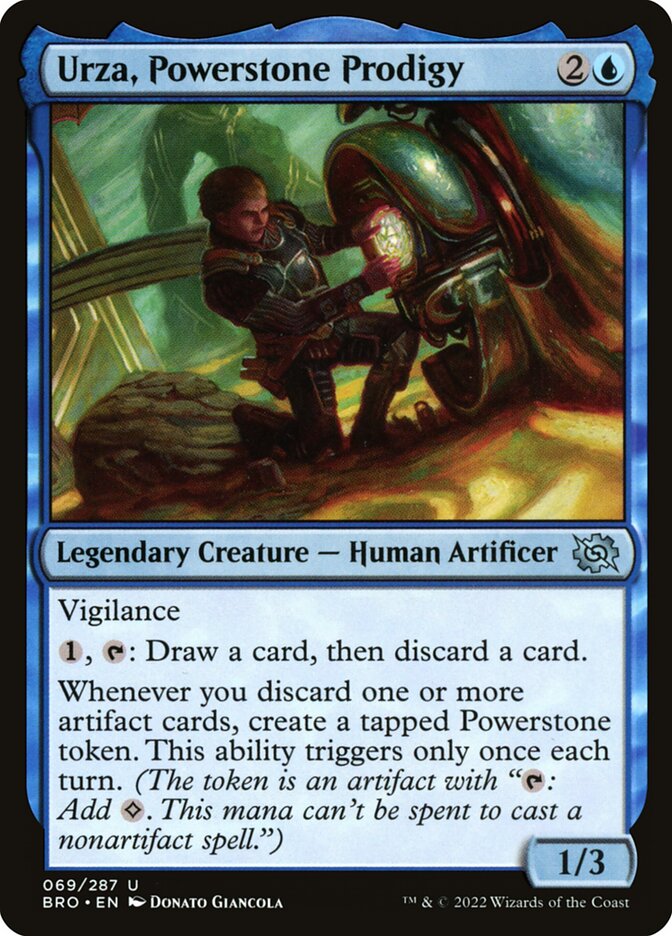
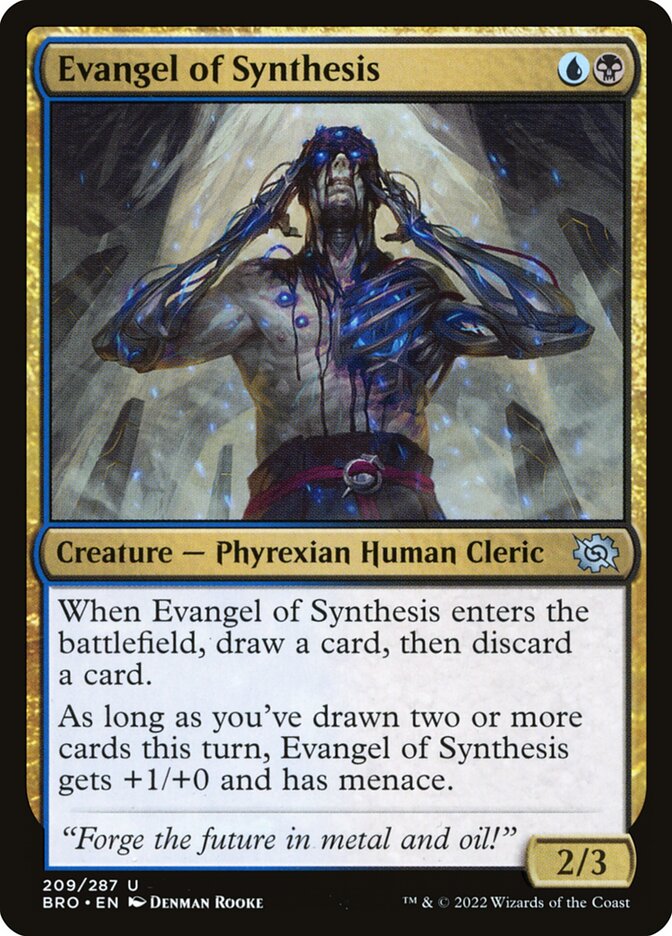

A “draw two” theme is difficult to construct in Limited, since Limited card draw spells are typically fairly efficient. One easy way to cheapen the effect is to remove its card advantage with loot effects, with Urza, Powerstone Prodigy and Evangel of Synthesis both being good examples. The payoffs? Well, there are the obvious ones such as the Evangel and Gurgling Anointer. But the real reward is finding the card you need for the current situation, so make sure your deck has plenty of answers and scary threats.
Blue/Red: Non-Creature Spells
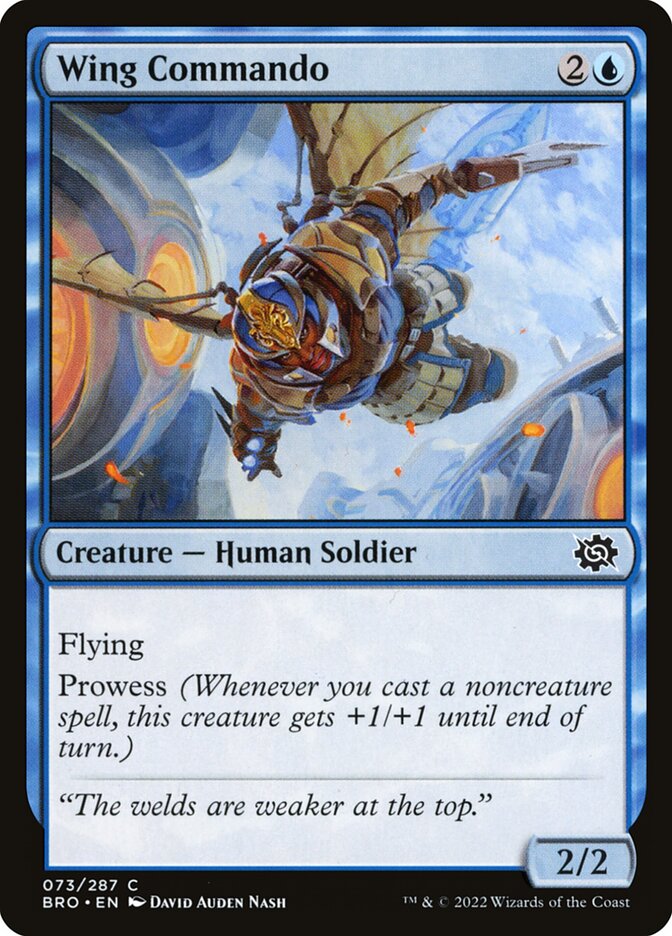

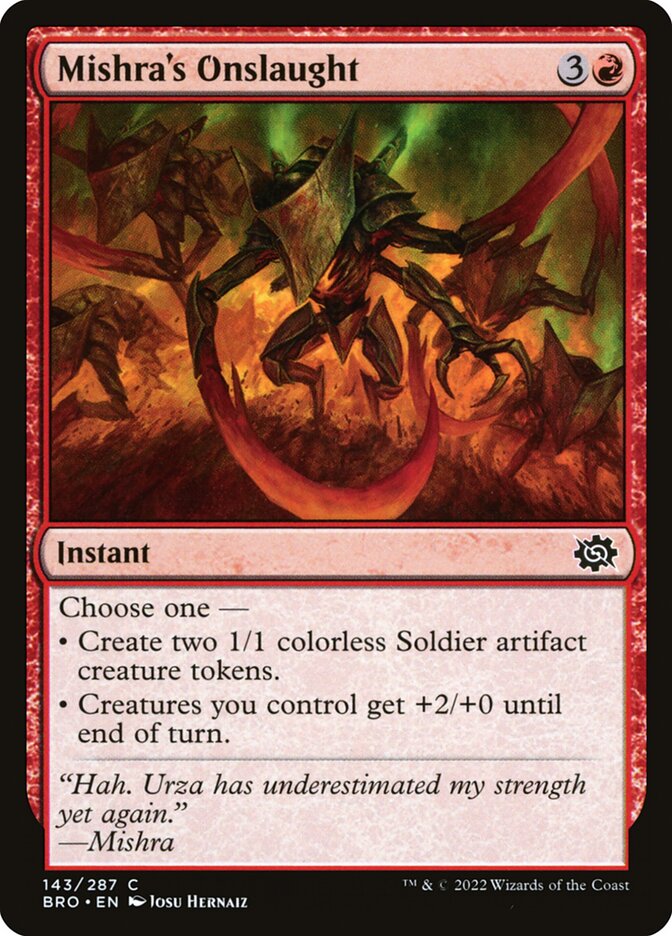
A Blue/Red non-creature spells archetype (and remember, this includes enchantments and non-creature artifacts) can be aggressive or controlling. Third Path Iconoclast lets us know which strategy is preferred in BRO, and the answer is a go-wide aggressive strategy that uses cheap pump and tempo spells to smack your opponent in the face. Wing Commando is a good beater in such a deck, with both evasion and Prowess. However Mishra’s Onslaught may be even better, as it’s a non-creature spell that gives you the option of either throwing more bodies onto the ground, or of buffing your entire army for a final lethal attack.
Black/Red: Sacrifice

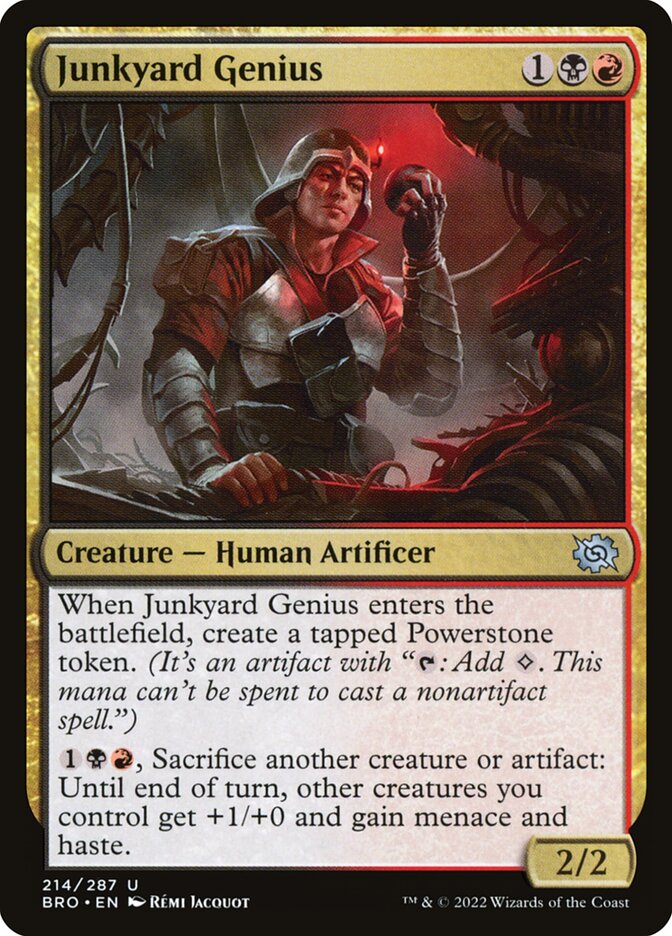
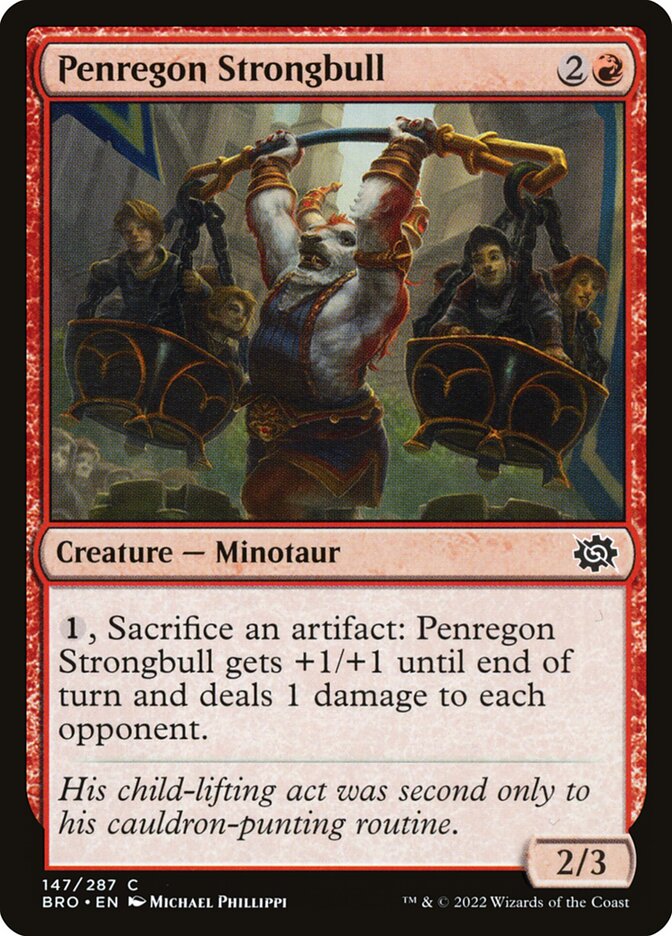
A sacrifice deck requires three things: something to be sacrificed, some way to sacrifice it, and some benefit to that sacrifice. Junkyard Genius gives you all three in one frightening card that can threaten lethal out of nowhere. However, it’s also important to note that the Powerstone token created can be used to help win a longer game as well. This archetype isn’t suicidally aggressive; it’s willing to bide its time to cast and sacrifice four drops such as Scrapwork Rager (multiple times!) with creatures such as Perengon Strongbull to grind an opponent down to a lower life total before it strikes for the victory.
Black/Green: Graveyard
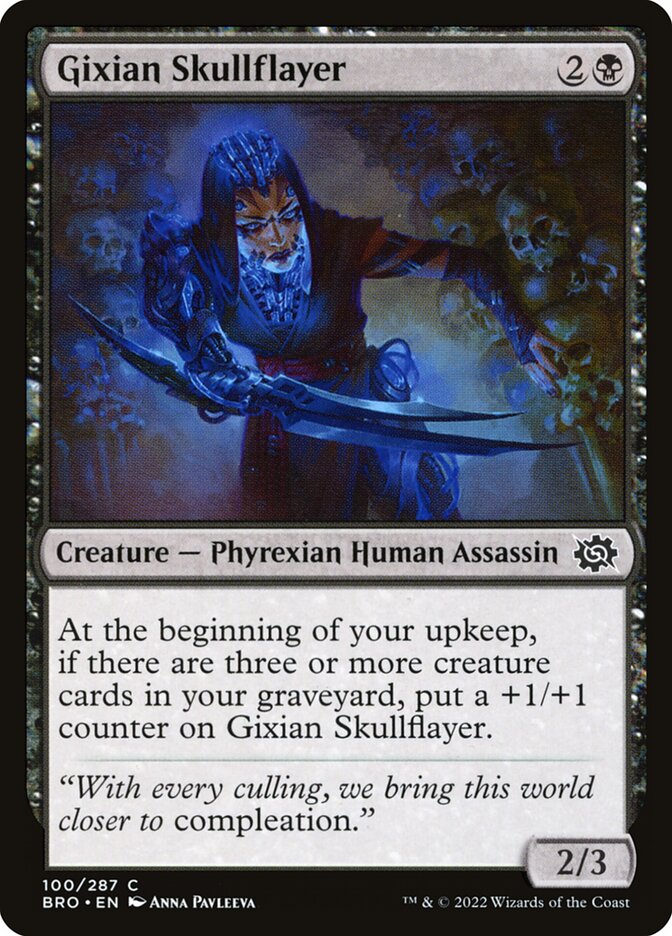
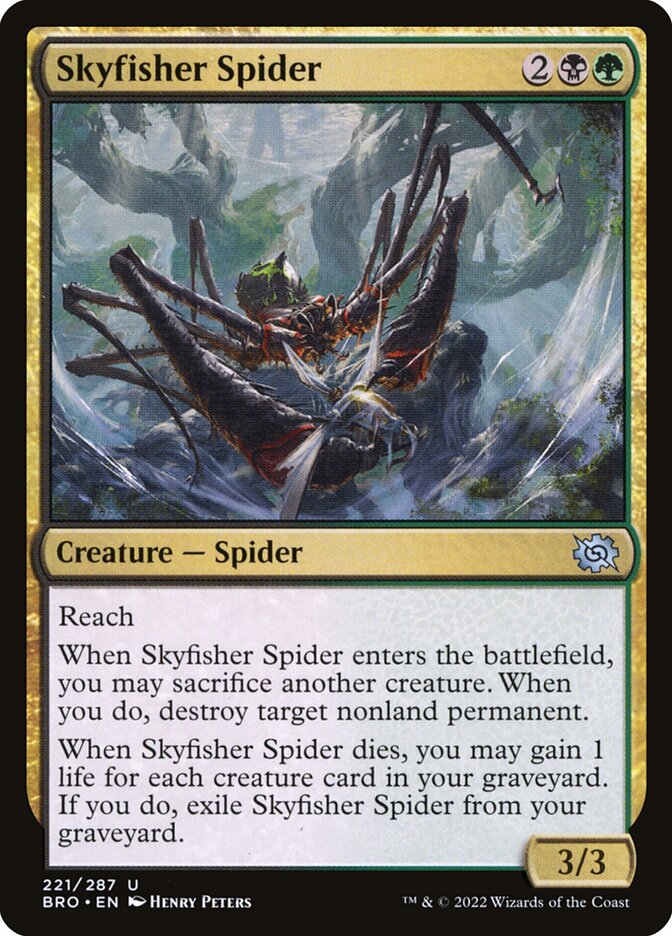
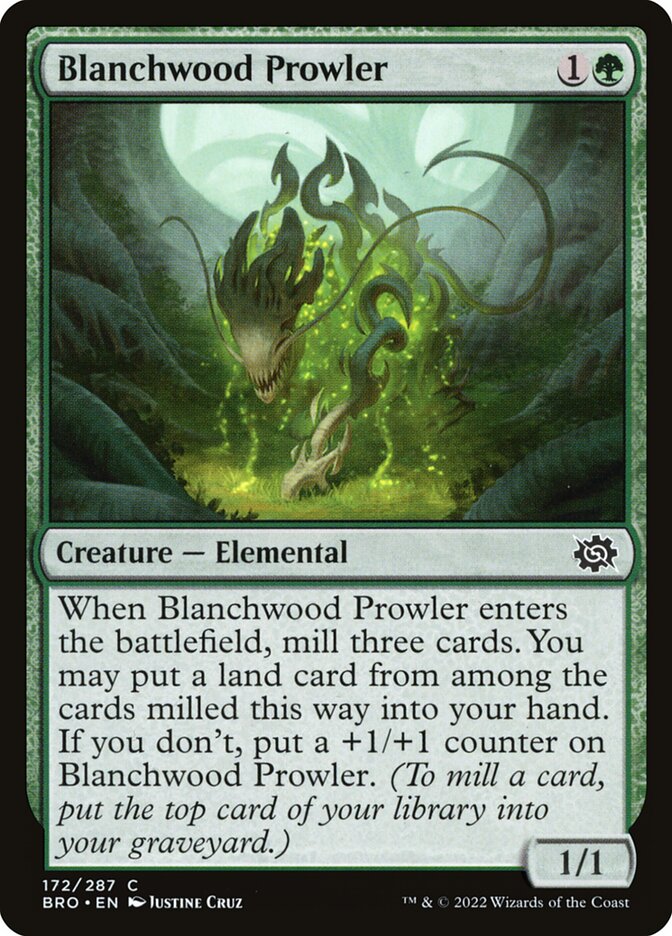
There’s no question that a game of Limited will result in your creatures being sent to the graveyard. But the Black/Green archetype wants you to do so *quickly*, and if you do you turn on creatures like Gixian Skullflayer, allowing a common three drop to potentially outclass the biggest artifact monstrosities. Use Blanchwood Prowler’s self-mill ability to speed your efforts, and then sacrifice its tiny body to Skyfisher Spider to take out even the most outsized threats.
Red/White: Go-Wide Attack
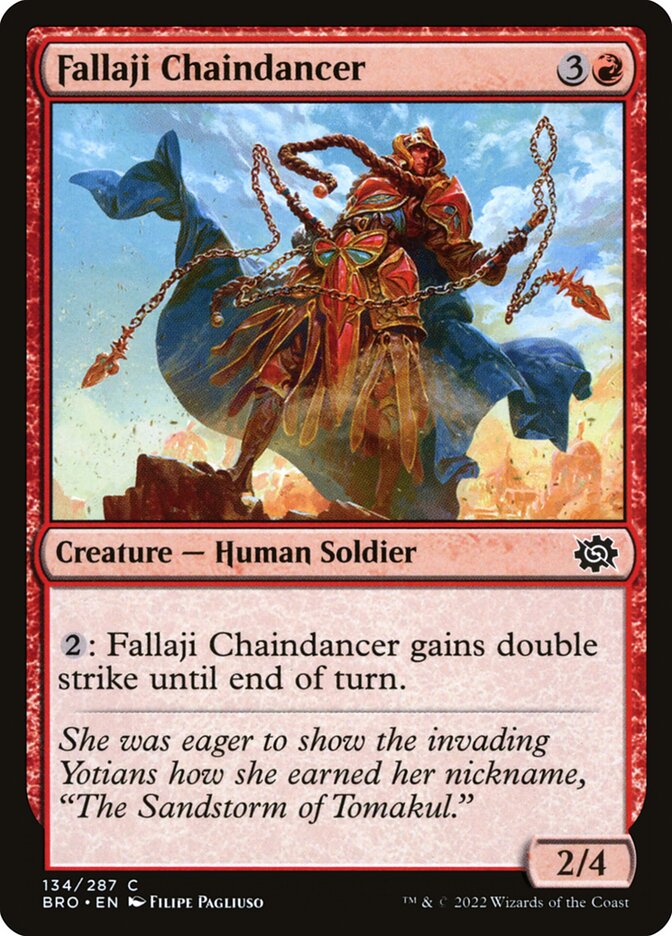
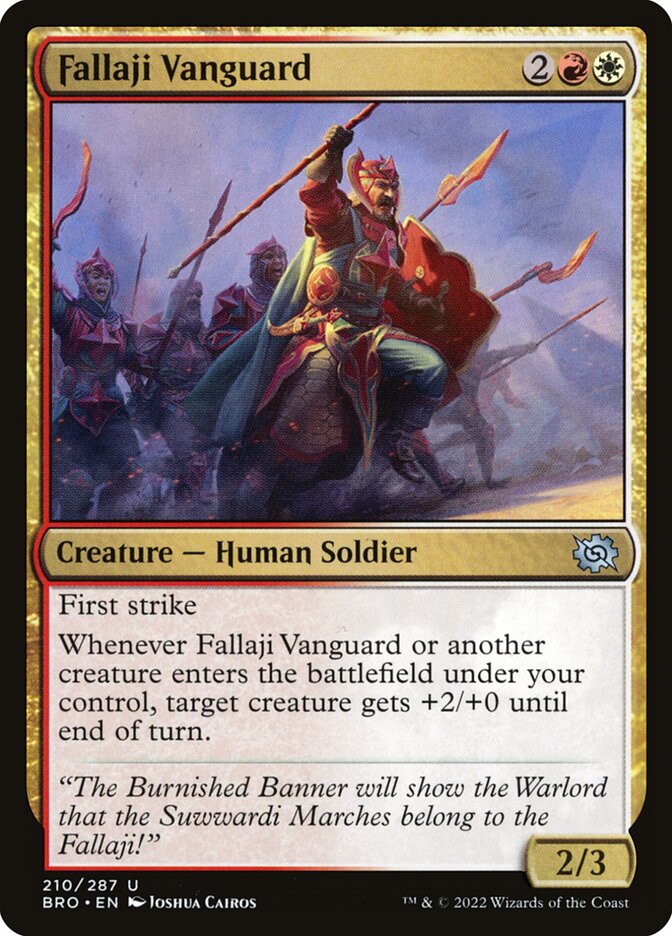
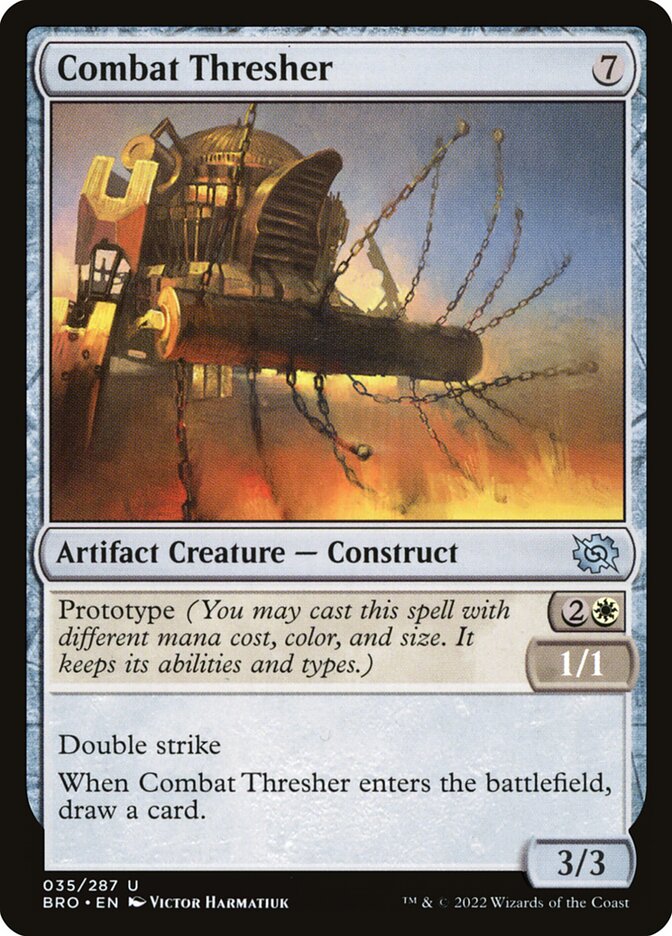
Red/White is once again an aggressive strategy. However, Fallaji Vanguard puts a new spin on the archetype: now it wants you to play creatures - oh, I guess it’s not really all that different after all. The signpost uncommon’s buff is especially effective on creatures with double strike such as Fallaji Chaindancer and Combat Thresher, and the buff is best triggered with token makers and flash creatures, with Unearth creatures also a great option.
Red/Green: Um

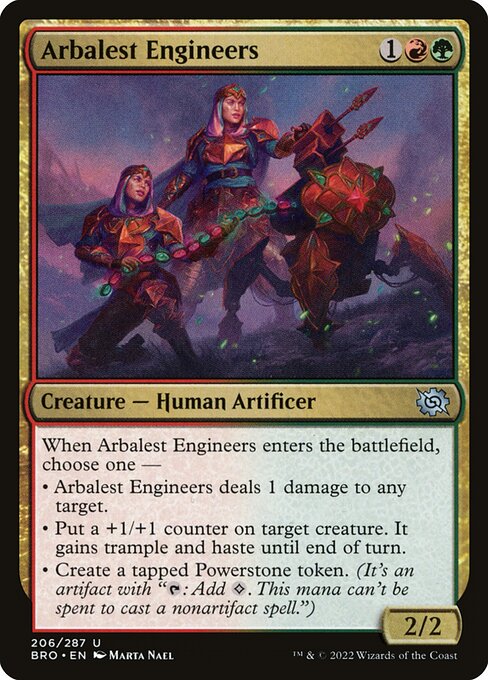
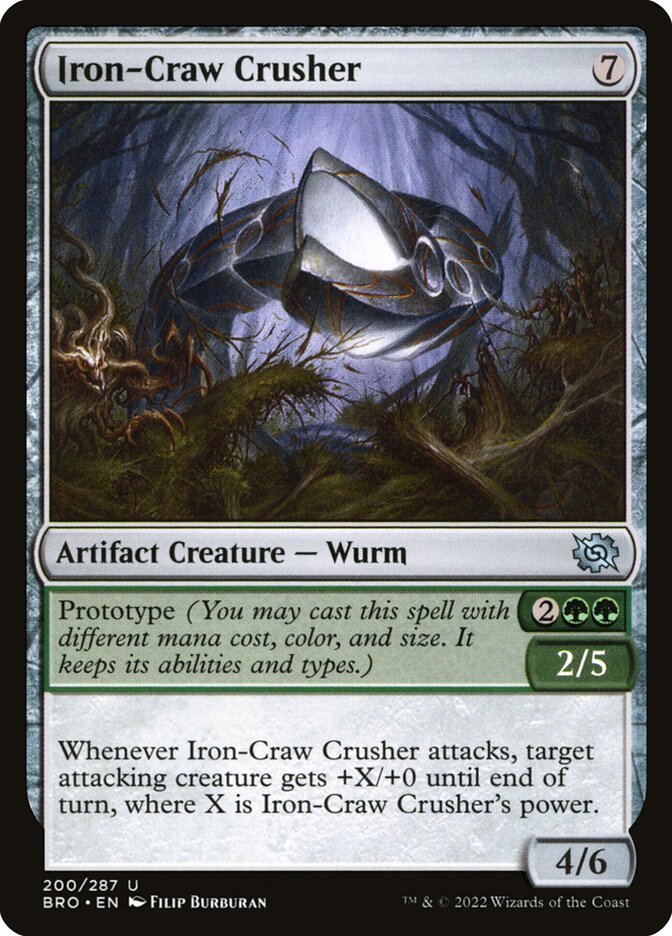
The three modes on Red/Green’s signature uncommon makes it obvious that the archetype can do… something. It can ping down early threats! It can buff its creatures! It can ramp cards out with Powerstones! Put that all together, and I *think* what you see is a midrange strategy with tools to deal with an aggro deck mixed with the capability of switching gears towards becoming the aggressor. In any words: this archetype can do anything, and pairs pretty well with any reasonable Red or Green cards. Just make sure you have a good curve - and Prototype creatures like Blitz Automaton and Iron-Craw Crusher work great at making sure you have an appropriately-sized threat at every stage of the game.
Green/White: Aggressive Artifactfall
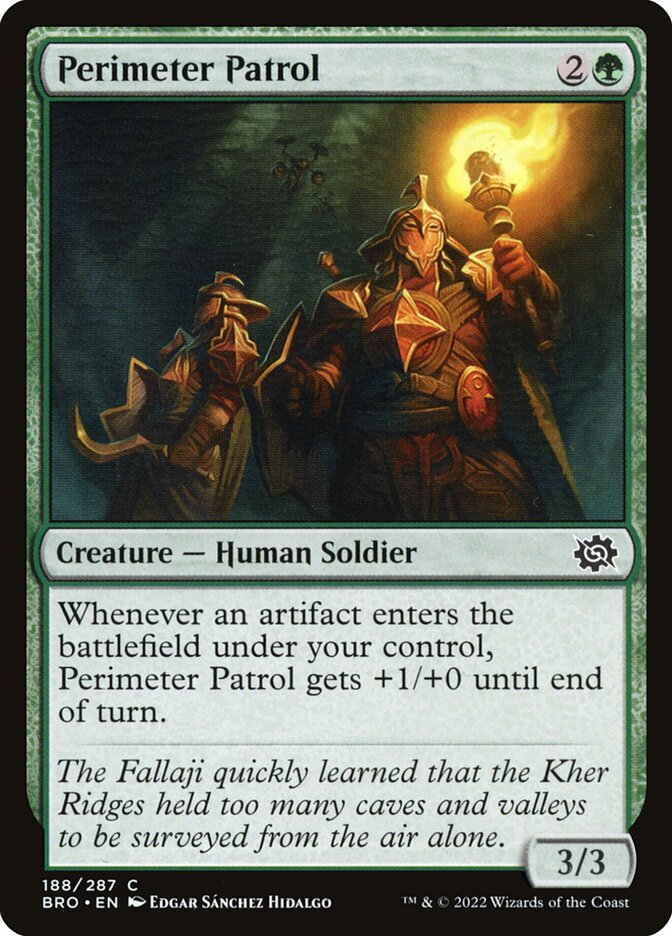
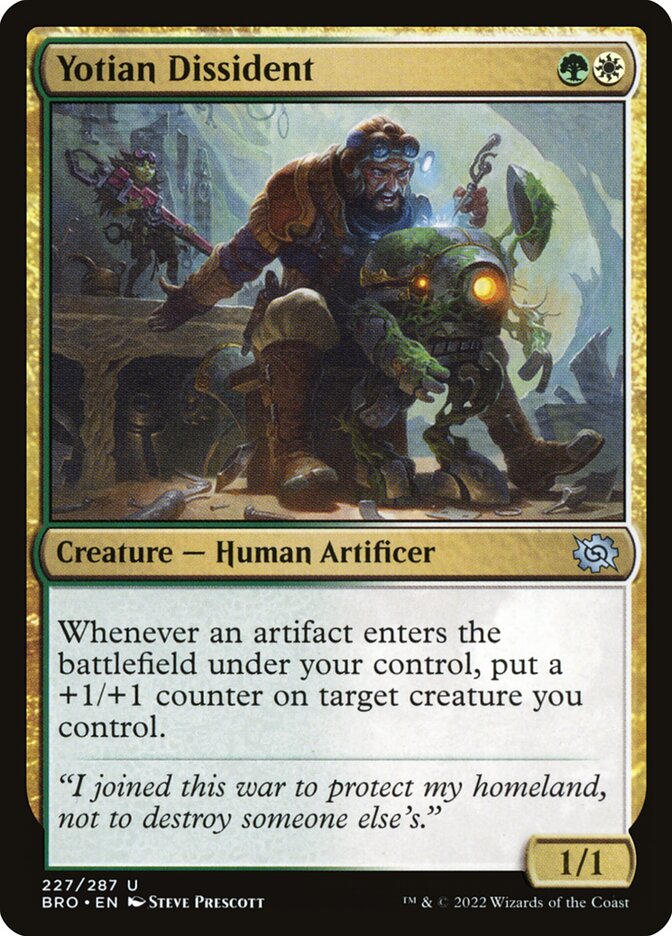
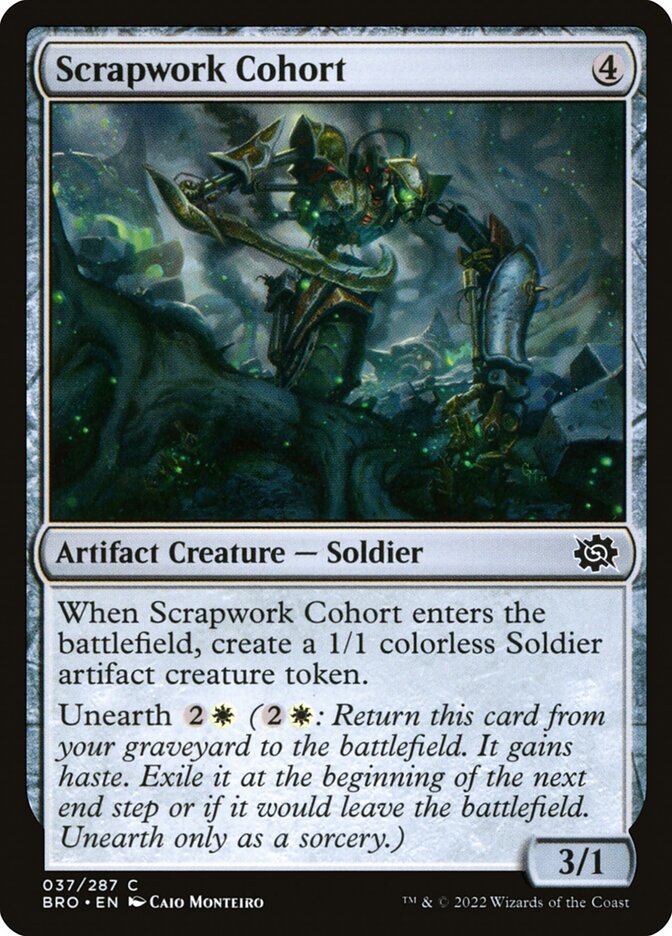
You might expect the only explicitly artifact-based archetype to be self-explanatory, but the “Aggressive” part of the strategy description is just as important. Although Yotian Dissident grants a creature a permanent buff whenever an artifact appears on your side of the battlefield, most artifactfall cards are like Permineter Patrol with its temporary +1/+0 boost. You’ll want to time your artifacts carefully as a result, waiting until an opportune moment to grow a creature to lethal size. Cards that create multiple artifacts are especially good: Scrapwork Cohort will grant two artifactfall triggers when it comes into play, and two more potential triggers by unearthing it later in the game.
Green/Blue: SUPER RAMP
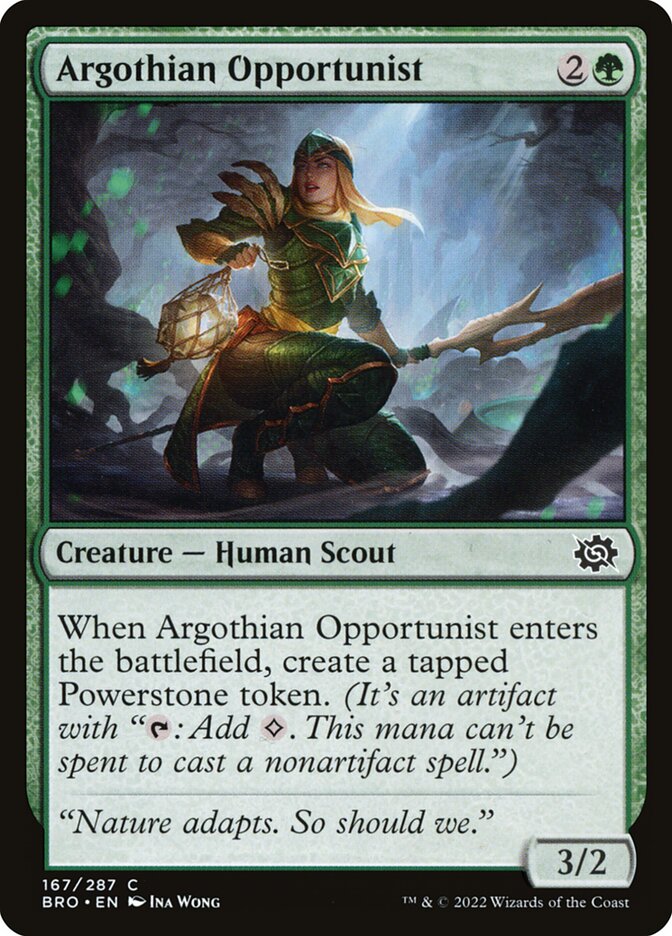
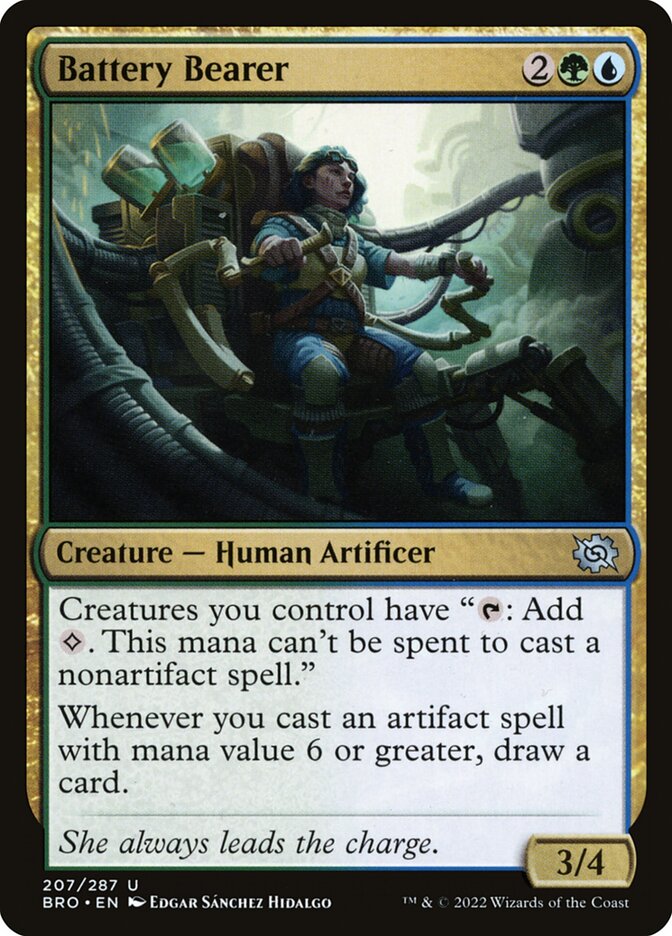
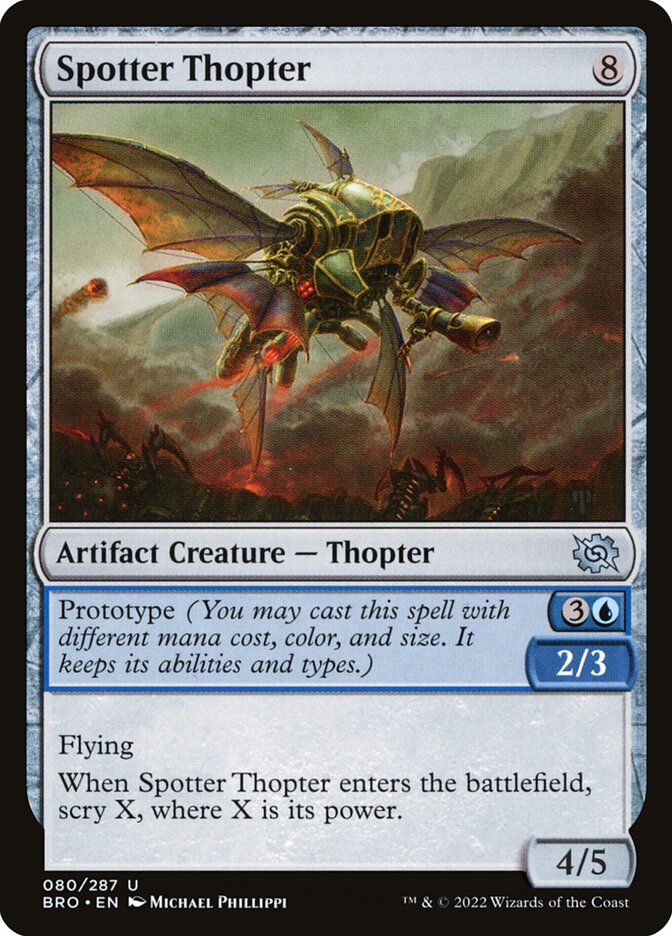
I mean, there’s not a ton to explain here - make Powerstones and ramp out big beasts to break your opponent to bits. And there are more ways to ramp than just Powerstones; Battery Bearer turns all your creatures into organic power sources that will let you cast your monstrous cards even faster. The issue is making sure you survive until the late game, which is why Argothian Opportunist is an ideal creature for this archetype: a cheap creature that also produces a Powerstone. You also want your share of Prototype creatures like Spotter Thopter that can be cast early to help dig for a needed card, or late to win the game with a big flier.
Mana Fixing
Let’s take a look at BRO’s common and uncommon colorless mana fixing. Strap in, it’s a doozy of a list:
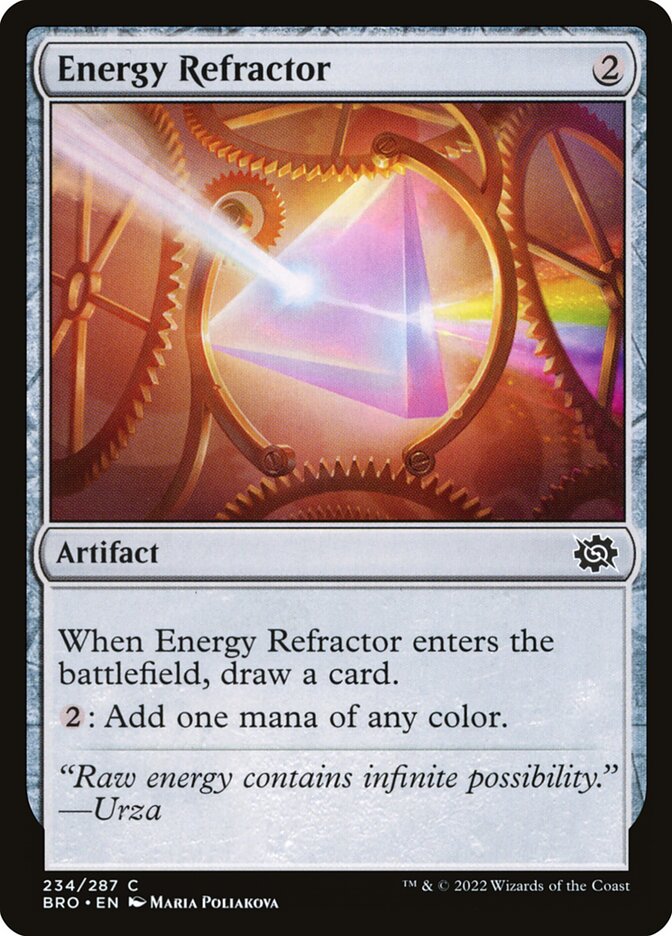
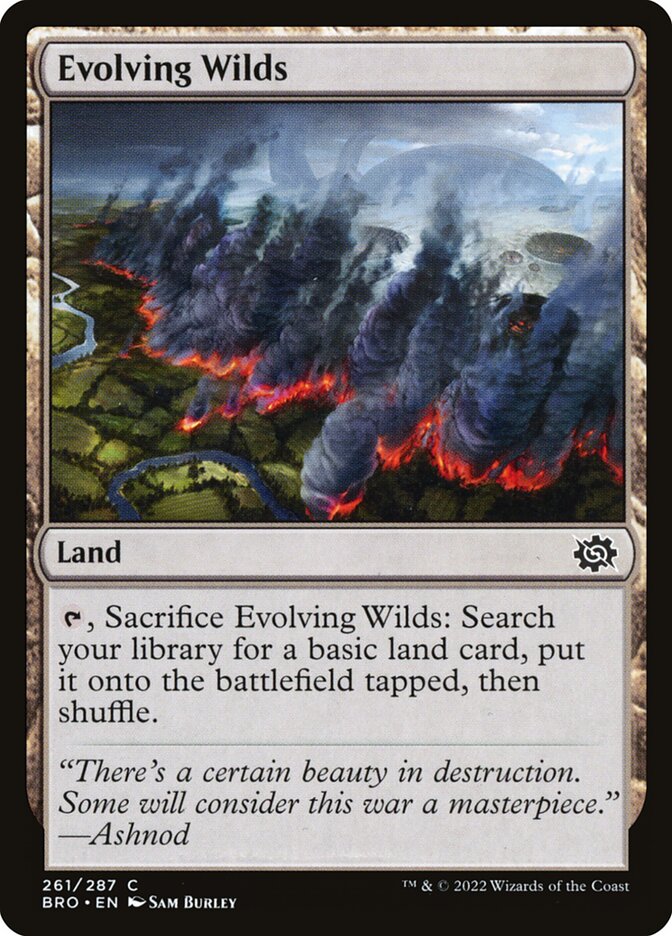
Green has a few more options of course, but nothing too amazing:
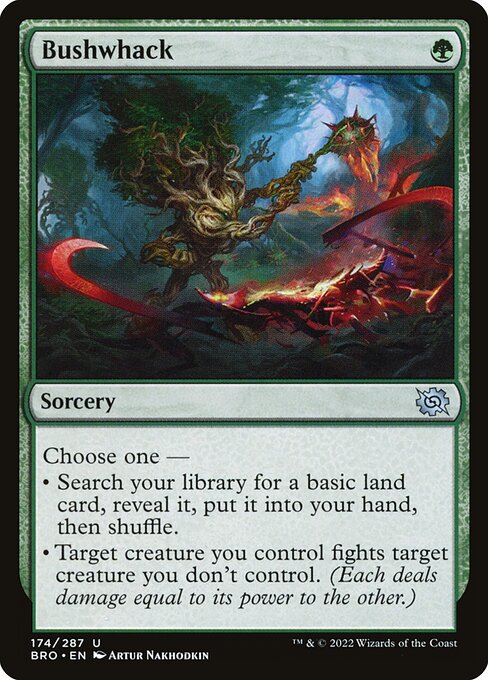

The inescapable conclusion is that BRO really isn’t a three+ color set. If your heart is set on making a splash, draft mana fixing highly - because there won’t be a lot of it.
Key Commons and Uncommons
White
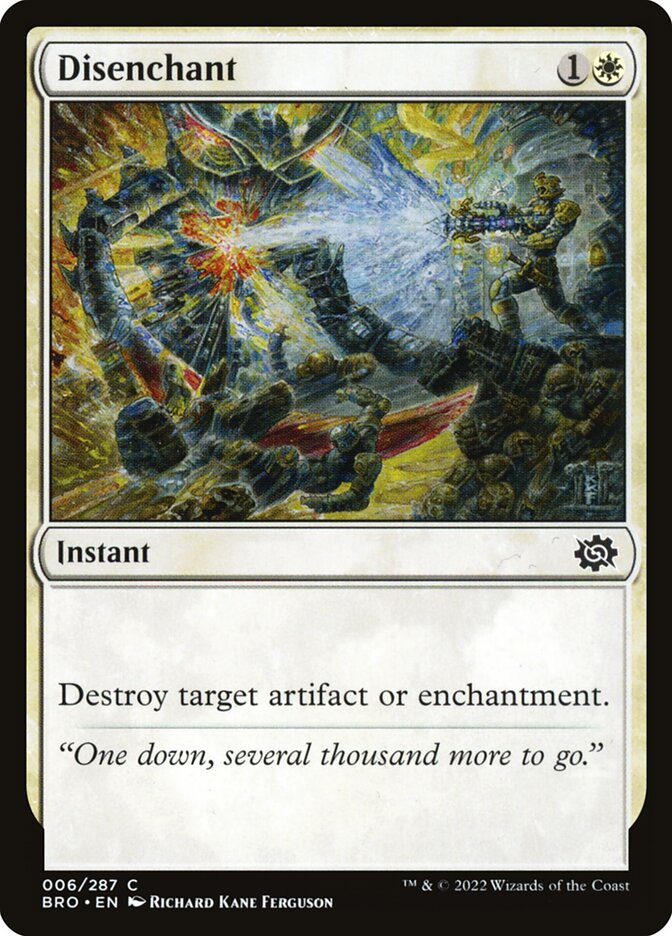
- Disenchant: Yeah, I’d probably put one or two of these into my main deck.
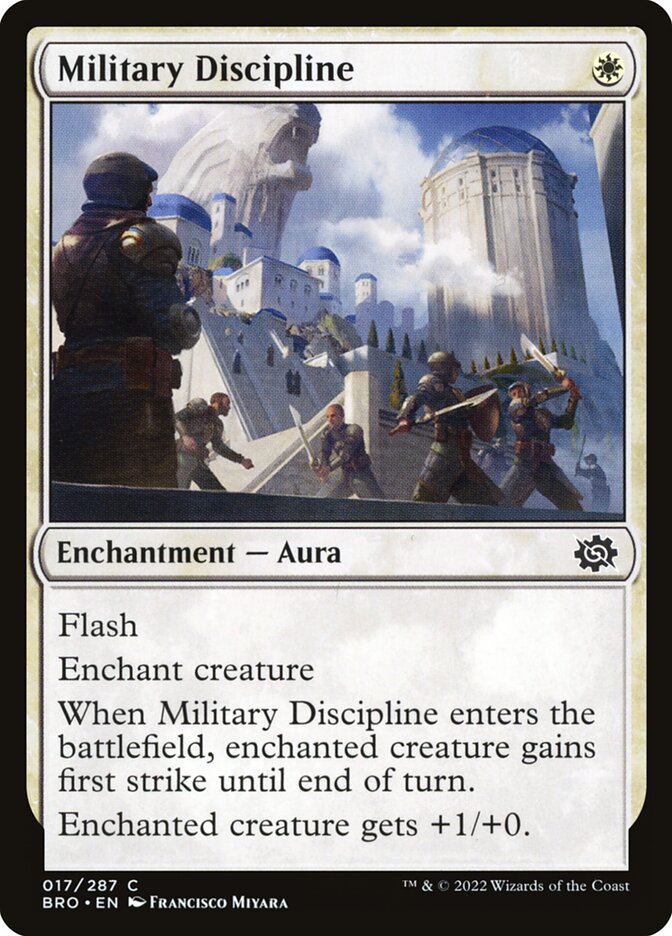
- Military Discipline: I’ve become increasingly impressed with combat tricks in recent Limited sets. This one seems good: cheap, and likely to kill an opponent’s creature while leaving yours alive.

- Static Net: Unconditional removal is unsurprisingly great. It’s a bit less great than normal because players will be main decking disenchant effects, but you’ll still get a Powerstone and some life out of the deal.
Blue
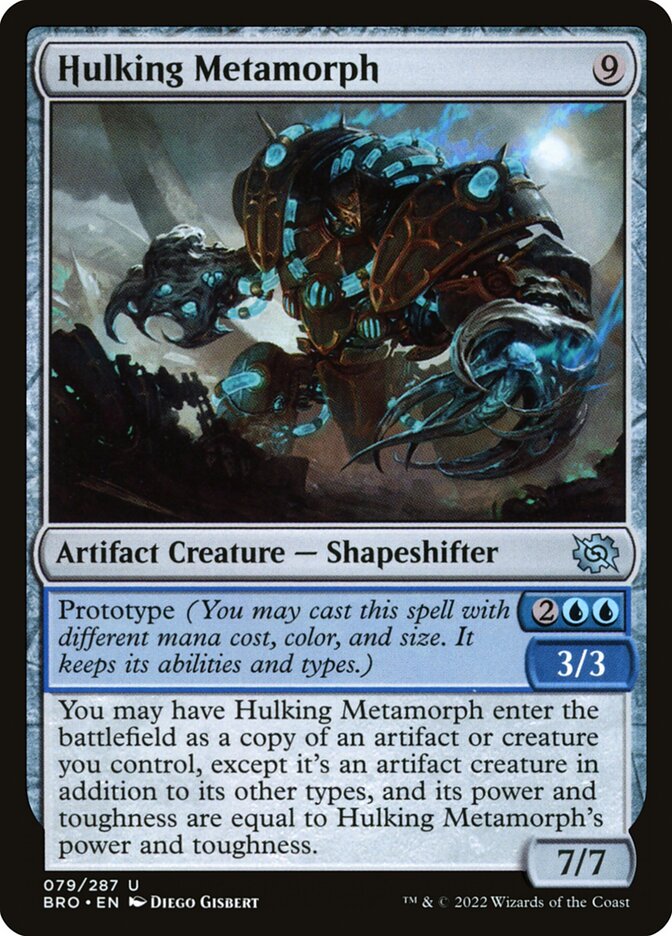
- Hulking Metamorph: You’ll be surprised how many creatures are improved simply by becoming a 3/3.
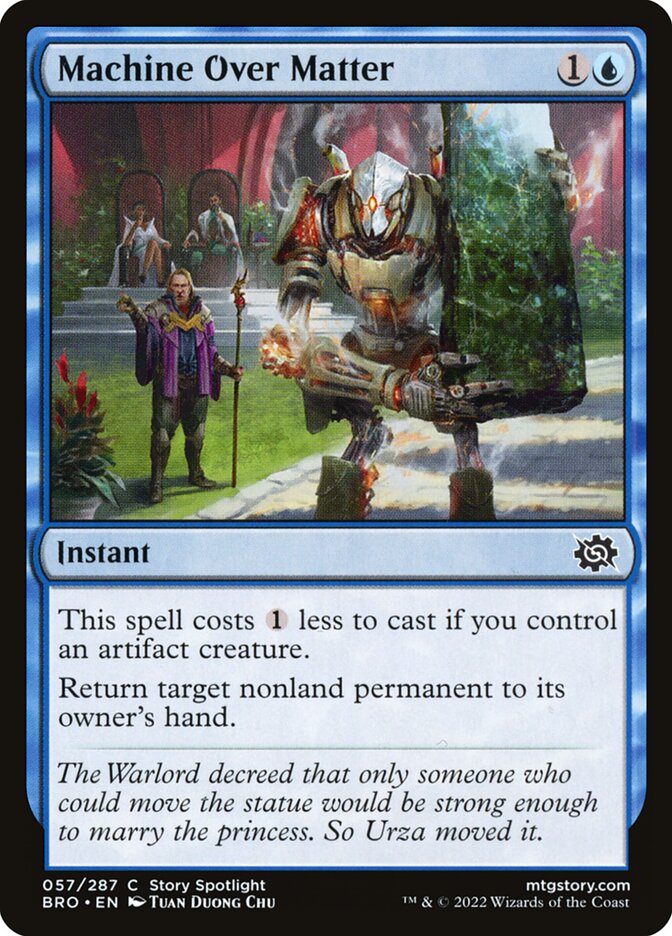
- Mind Over Matter: A cheap tempo spell is not to be scoffed at, especially in a set where Blue can be aggressive. Note that you can also bounce your own Prototype creatures, enabling you to potentially cast its more powerful version.
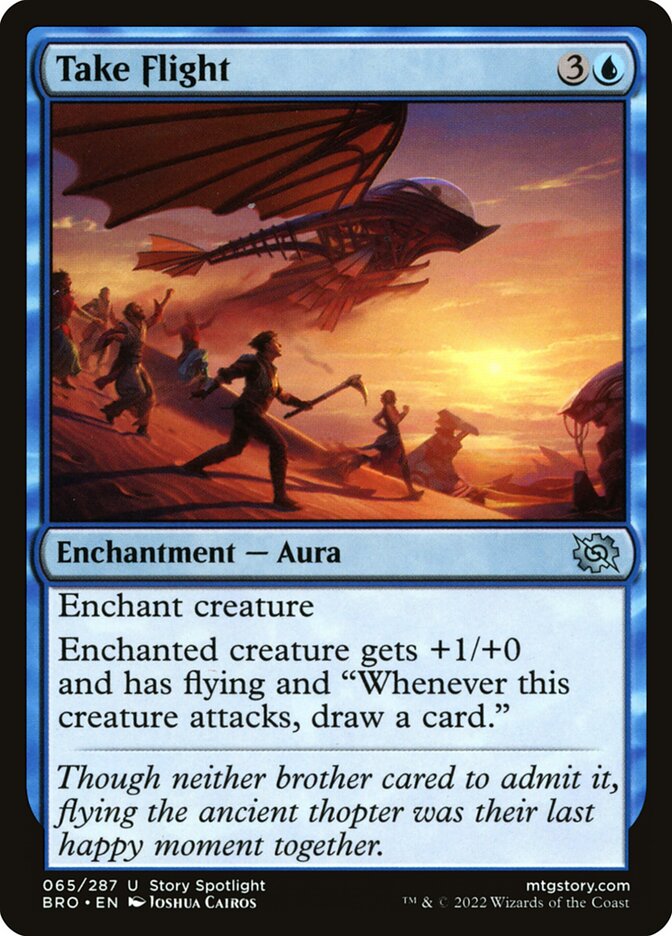
- Take Flight: You have to beware instant speed interaction, but otherwise this Aura will almost immediately replace itself while creating a dangerous threat that has to be dealt with at once.
Black

- Moment of Defiance: Instant-speed lifegain tricks are often enough to swing the tempo of a game to your favor. If this causes your creature to trade, you’re not down a card; and if it causes your creature to win the combat, you’re actually up a card to boot.
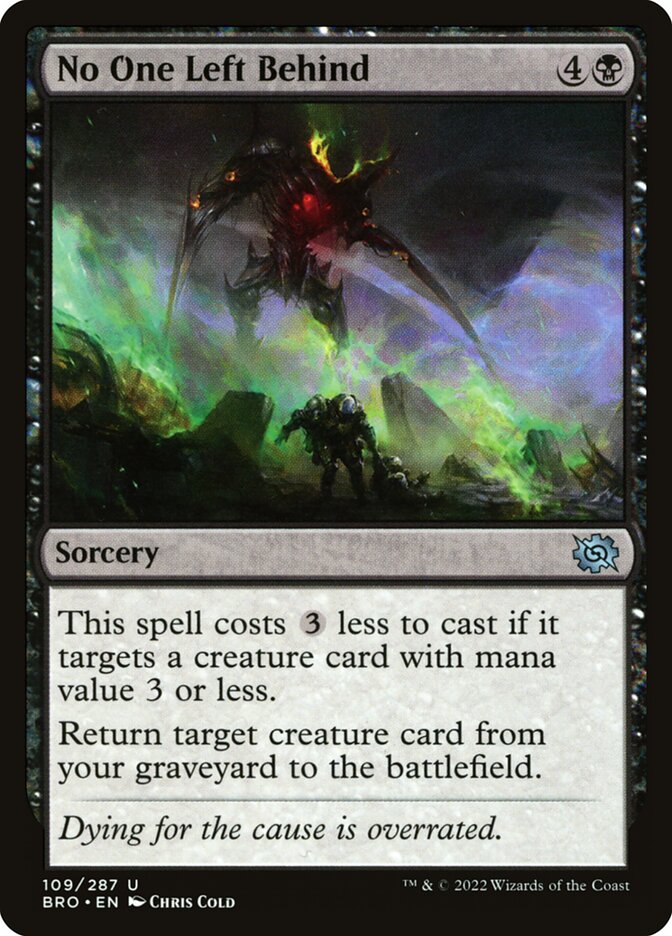
- No One Left Behind: Reanimation effects can be a bit hit or miss in Limited. What makes this one good? Two things: the cheaper cost when targeting a smaller creature, and the presence of truly enormous artifact creatures as reanimation targets.
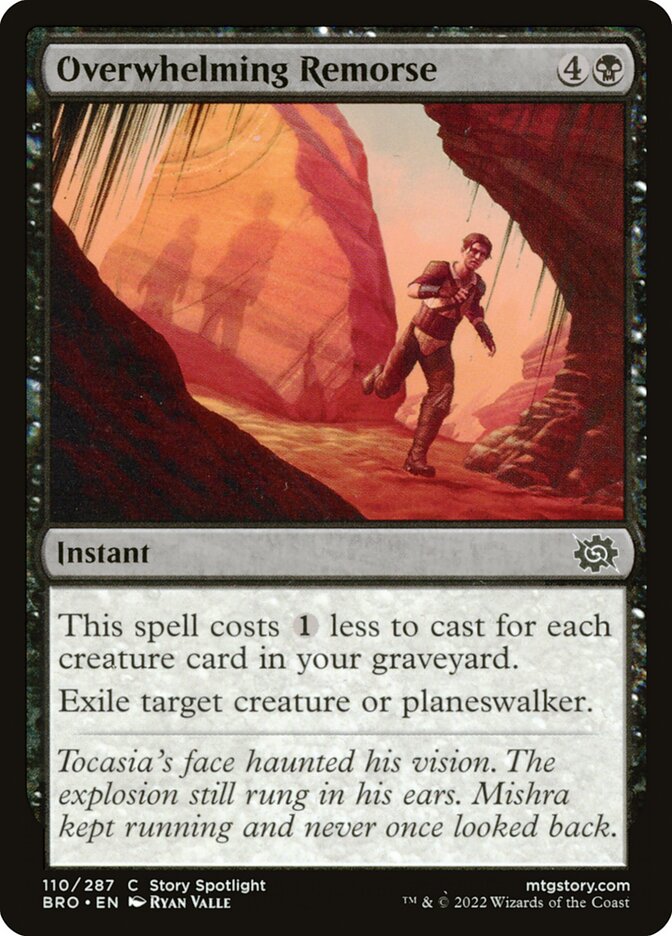
- Overwhelming Remorse: Unconditional removal, instant speed, exile effect, cheaper as the game goes on, etc.
Red
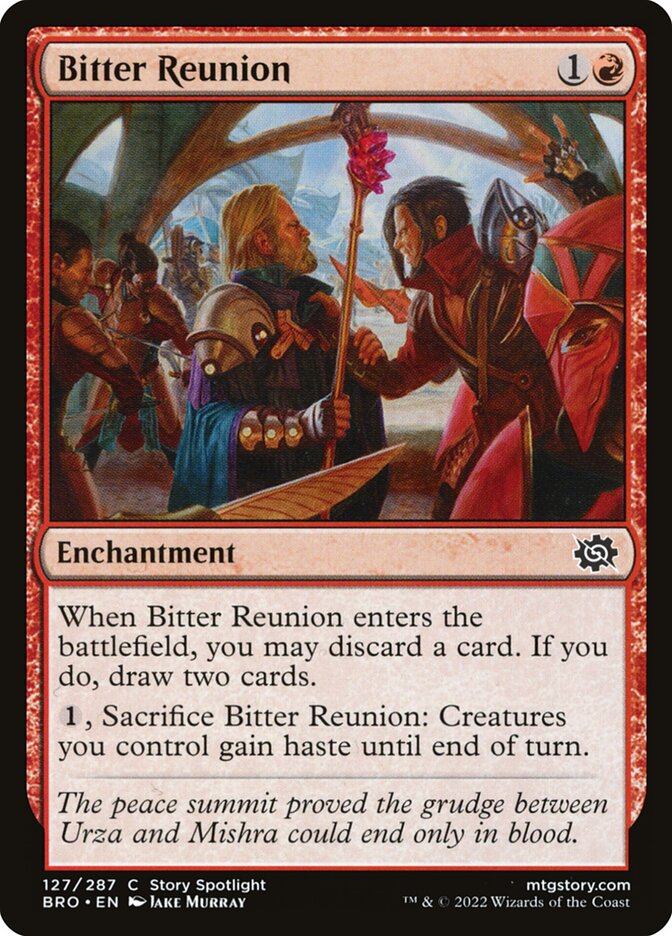
- Bitter Reunion: It’s possible I’m overestimating this card, but a haste effect that doesn’t put you down cards seems pretty good to me.
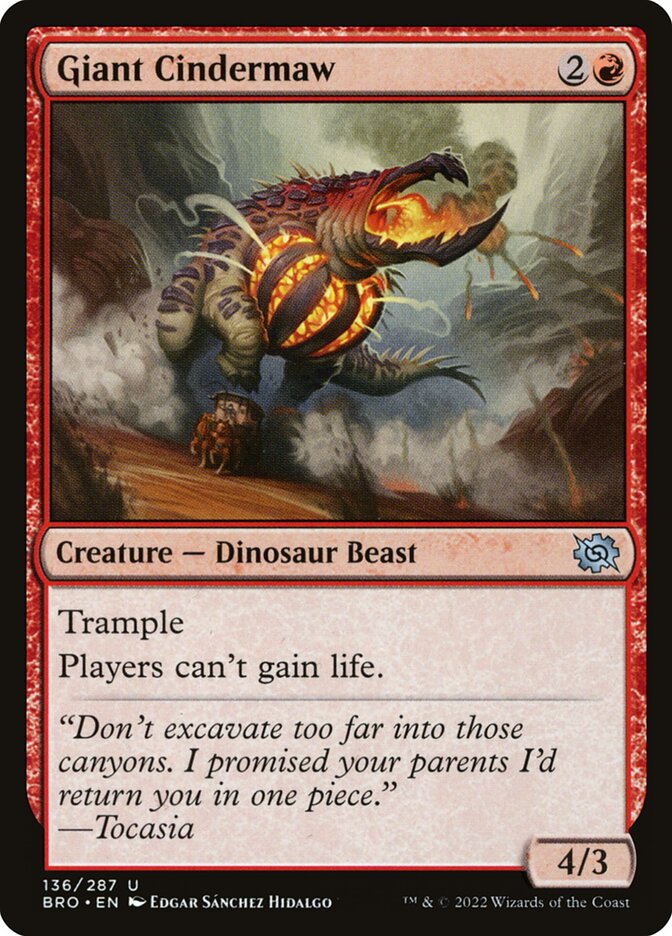
- Giant Cindermaw: This creature is so above rate that it’s not funny. Unless it’s in my deck.
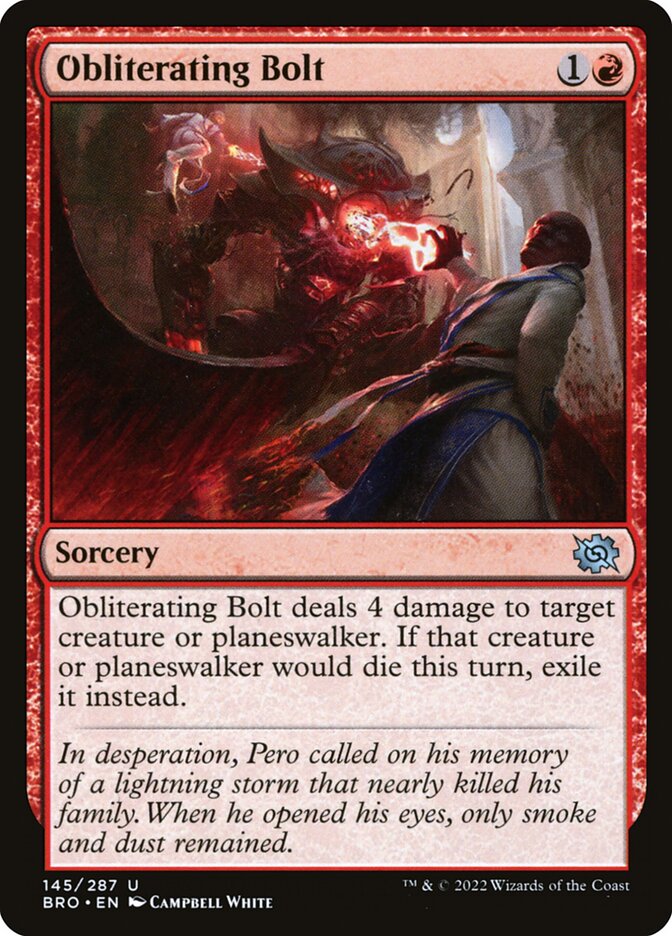
- Obliterating Bolt: This won’t deal with *everything* in the set. it’ll deal with most things, and the exile clause is a great bonus in a set with graveyard synergies.
Green
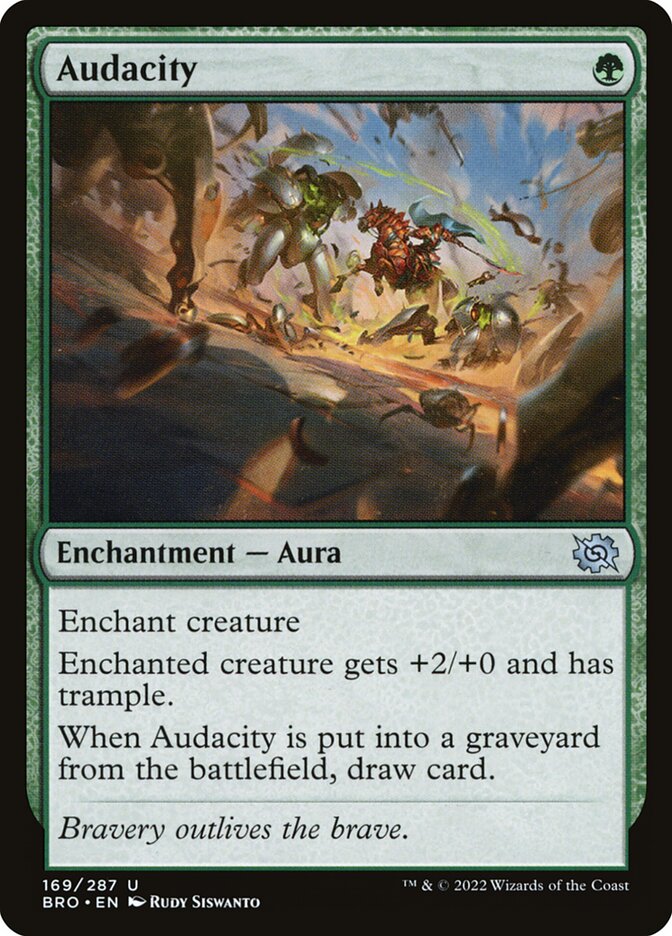
- Audacity: This isn’t Rancor, but it is an Aura that replaces itself while turning a creature into a gigantic threat.
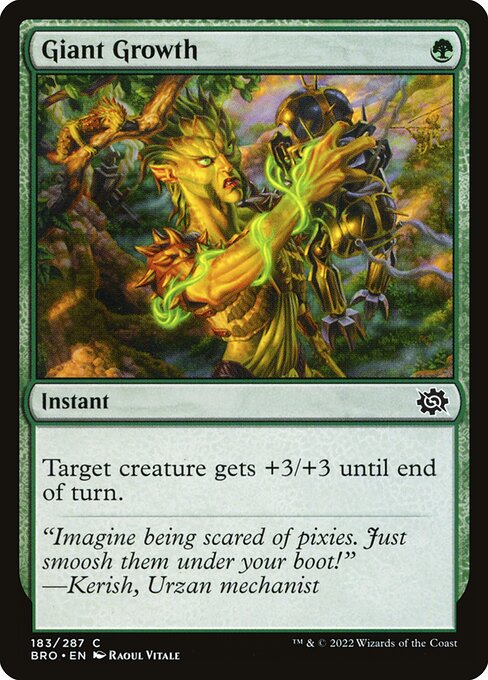
- Giant Growth: A classic spell, reprinted so that a new generation of Magic players can have the pleasure of blowing out their opponent during combat or presenting lethal out of nowhere.
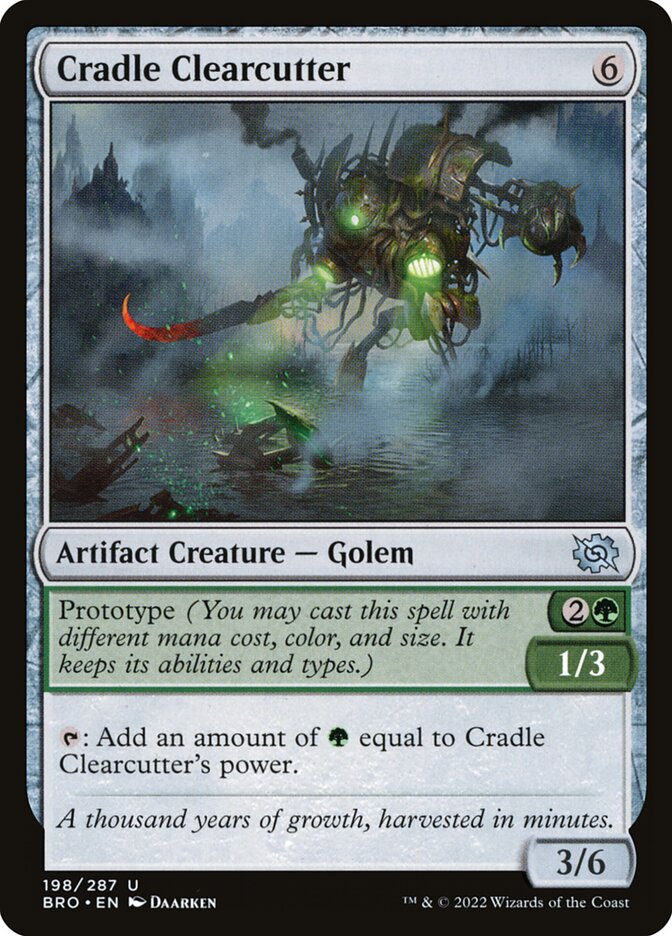
- Cradle Clearcutter: A ramp creature in a ramp set is undeniably good. You can cast this for its Prototype cost and then use pump spells to quickly throw full-fledged Prototype creatures onto the battlefield.
Summation
Let’s summarize The Brothers’ War and see if we can draw any conclusions!
- BRO is a throwback set in more ways than one. Besides the high density of colorless artifacts, there’s also a distinct lack of mana fixing that will make a three+ color deck difficult to draft.
- I suspect the reason for this design is because Wizards wants players to stretch themselves in a different dimension: the deployment of high-mana artifact beaters that threaten to overwhelm a board as soon as they’re cast. Some of these creatures have a safety valve with their cheaper Prototype cost - but if you can ramp out their fully developed form, you’ll have a huge advantage.
- The ten Limited archetypes bleed into each other quite a bit; if you’re drafting a White/Blue Soldier deck, don’t expect every Soldier to automatically fall into your lap just because they’re Soldiers, since many of them will have applications in other archetypes. Disciplined drafting is key.
- Needless to say, cards that deal with artifacts are particularly good. In addition, BRO has a heavy graveyard theme, so cards that exile should also be sought after.
Good luck!










